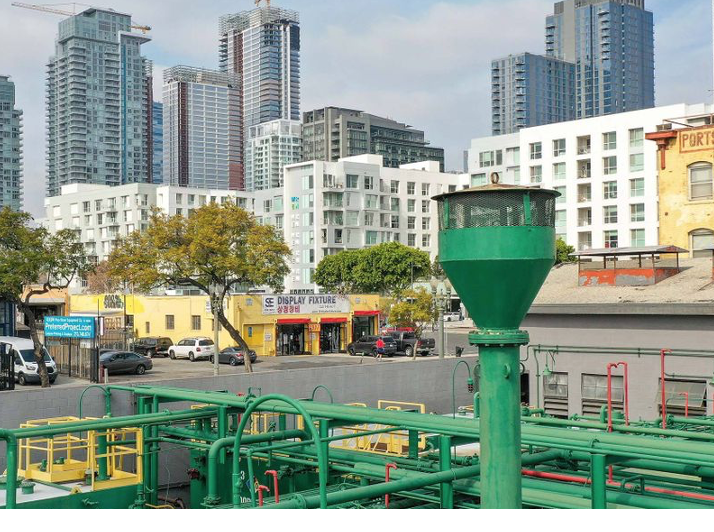CommentsSPECIAL REPORT-On a breezy February afternoon at the ragged edge of rapidly gentrifying downtown Los Angeles, hipsters walk toy dogs along Pico Boulevard.
Around the corner on 14th Street, an actor strikes poses for a photo shoot against murals of sunflowers, diamonds and inspirational sayings. The aging, yellow brick residential Portsmouth Hotel sits among knockoff watch dealers here, while a block away, a giant construction crane hoists materials skyward for new luxury apartments.
Below ground is another story. Tucked out of sight, oil wells run thousands of feet deep, tapping thick crude from one of California’s many urban oil fields. And in the fall of 2019, investigators with the state’s oil agency flagged trouble.
Nasco Petroleum was injecting huge amounts of water into well bores above the legal pressure limits, aiming to push more crude out of the aging downtown field. Similarly intense pressure led to a major oil spill in 2006, after a nearby well bore operated by Nasco’s predecessor ruptured. Hot crude and oily waste bubbled up from underground, filled an apartment building basement, oozed out of manhole covers and buckled sidewalks. More than 130 low-income tenants were evacuated.
The pressure wasn’t the investigators’ only concern. They also noted that a number of “bad” wells had been left unfixed for years, with missing cement seals. The wells, investigators wrote in a report to a manager, posed “immediate” risks to drinking water aquifers. They urged supervisors at the California Geologic Energy Management Division, or CalGEM, to take the strongest possible enforcement actions: order Nasco to cease well operations, suspend approvals of the company’s project or both.
No one ever did. While the agency said in a statement that it has taken less stringent measures, like mandating that Nasco lower injection pressure, it declined to provide evidence that the company had complied. Officials acknowledged they remain concerned about potential threats to drinking water, though they said they had no proof of contamination. In January, they said they would address the problems but declined to provide specifics.
“Respectfully, we do not comment on ongoing enforcement actions or investigations in order to preserve their integrity,” spokesman Don Drysdale said in an email.
Today, three of the problematic wells are listed as active on CalGEM’s website. Less than 100 feet from Nasco’s oil operations, low-income residents of the Portsmouth Hotel said they’ve endured decades of problems from the site, including the ground trembling at all hours, fumes that cause headaches and nausea, and equipment catching fire. (Read the rest.)
-cw














